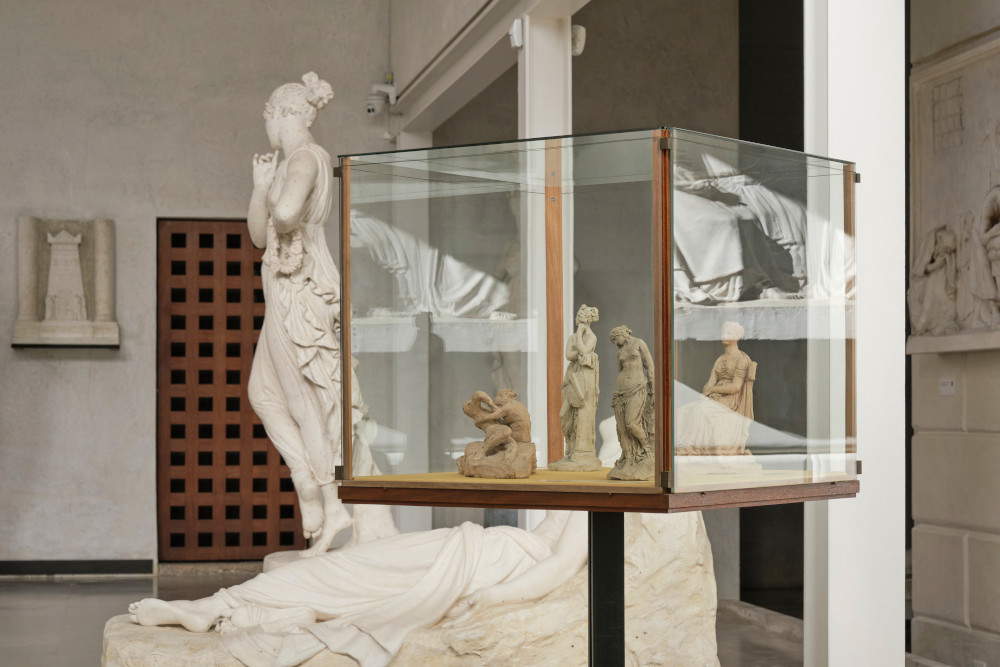Restoration work on the sketches of the Gypsotheca Antonio Canova Museum in Possagno, carried out thanks to the support of Volotea, has been completed. In May 2021, with an impressive 14,222 votes, the Museum won the #Volotea4Veneto contest, an initiative born from the collaboration between the low-cost carrier based in Venice and Verona, SAVE Group, and the Veneto Region. The Museum was thus able to begin the restoration of thirty-four terracotta sketches. Restoration work began in 2021 and today, thanks in part to collaboration with the University ofPadua and the Universityof Bologna, has been completed.
Also in the Veneto region, Volotea supported the restoration of the Sansovinian balcony of the Doge’s Palace overlooking St. Mark’s Square in Venice four years ago, and Naples more recently funded the new access area to the National Archaeological Museum.
“We are thrilled to have collaborated on the restoration of the 34 terracotta sketches from the Antonio Canova Gypsotheca Museum,” said Valeria Rebasti, International Market Director of Volotea. “These initiatives allow us to forge stronger and stronger ties with the local realities in which we are present and, at the same time, offer us the opportunity to actively participate in the protection of Italian art. We have always taken care to maintain excellent relations with the cities that host our stopovers, and Veneto, in particular, where two of our 19 bases are located in Venice and Verona, continues to confirm itself as a very strategic region for our company.”
“Thanks to Volotea’s support, we have embarked on a virtuous path that has allowed us, on the one hand, to restore the entire corpus of clay sketches from the Museum’s collection and, on the other, to deepen our knowledge of the sculptor’s creative technique: a big applause to the airline that during all the phases of the project, from the diagnostic analyses to the consolidation intervention, has been by our side confirming its great sensitivity towards the preservation of artistic heritage. We hope that in the future other ambitious goals can be achieved together!” said Moira Mascotto, director of the Gypsotheca Antonio Canova Museum in Possagno.
The final phase of the work saw the CIBA Interdepartmental Center for Cultural Heritage of the University of Padua engaged in conducting noninvasive, multispectral imaging and point spectroscopic Raman and FORS analyses, which allowed the study of the surfaces and differences between the artifacts.
This research led to particularly interesting implications because it was possible to analyze the materials used by Canova and, in particular, the sought-after “mixture/technology” elaborated and desired by the artist to obtain the sought-after result. In addition, the clays used by Canova were compared with a sample from today’s Possagno quarries to try to reconstruct the origin of the material with which the Sculptor, between Possagno and Rome, made the sketches.
A work of analysis and study has deepened the knowledge of the technique used by Antonio Canova and that now, thanks to the end of the restoration work, has returned these works to the Possagno Museum where they are once again on display.
Today some of the restored sketches are on loan to the National Gallery of Art in Washington for Canova. Sketching in Clay, an exhibition that aims to investigate precisely the creative process and technique used by the sculptor and that will stop at the Art Institute of Chicago from November 2023 to April 2024.
 |
| Restoration work completed on 34 sketches at the Antonio Canova Gypsotheca Museum in Possagno |
Warning: the translation into English of the original Italian article was created using automatic tools. We undertake to review all articles, but we do not guarantee the total absence of inaccuracies in the translation due to the program. You can find the original by clicking on the ITA button. If you find any mistake,please contact us.